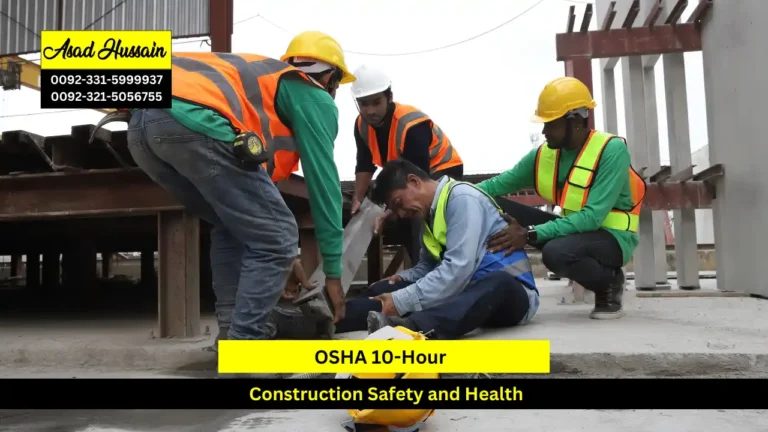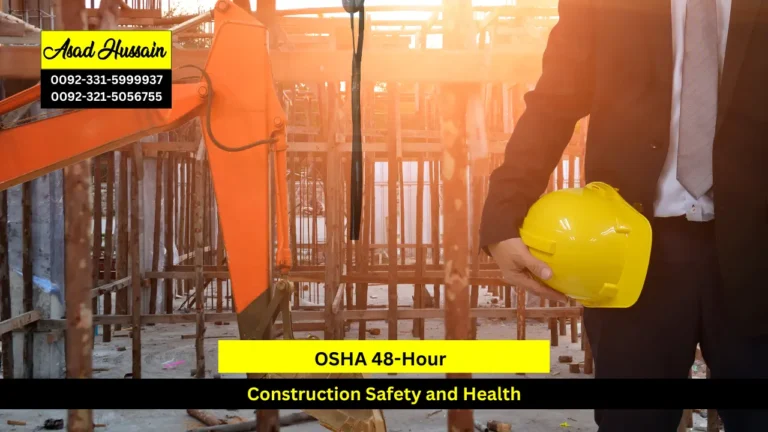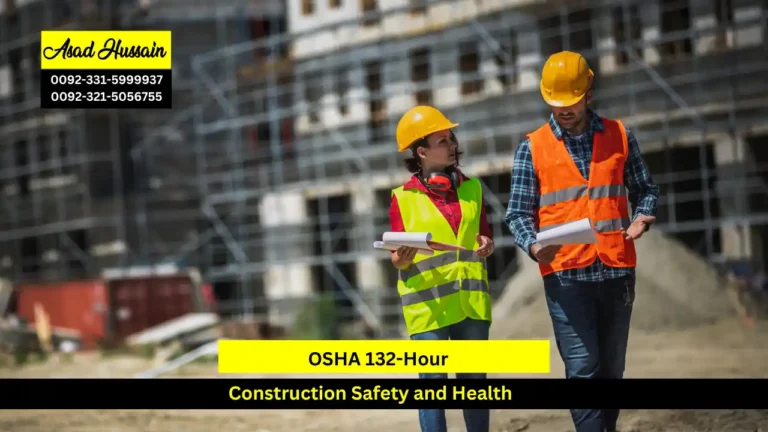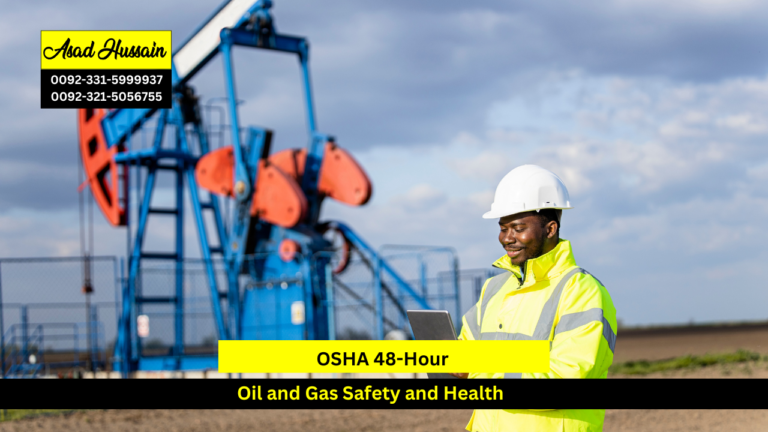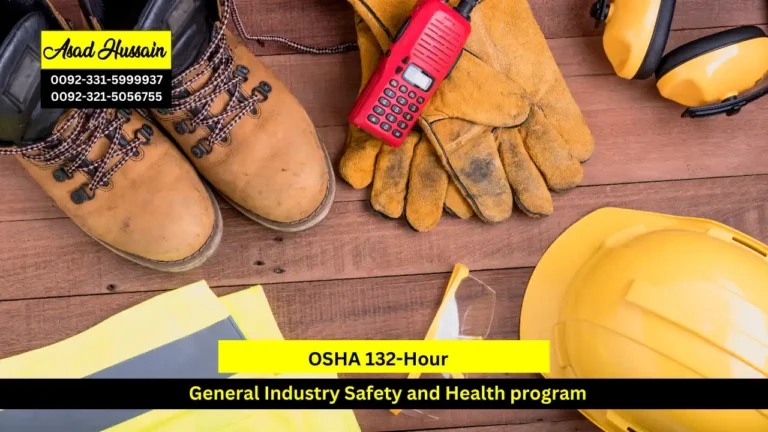In today’s dynamic and ever-evolving work environments, the importance of maintaining stringent safety standards cannot be overstated. The OSHA 132-Hour OSH Professional program is a comprehensive training course designed to equip safety professionals with the knowledge and skills necessary to create and maintain safe workspaces.
The Occupational Safety and Health Administration (OSHA) is a regulatory body in the United States responsible for ensuring safe and healthy working conditions. OSHA develops and enforces standards, provides training, outreach, education, and assistance to ensure that workplaces comply with safety and health regulations.
The OSHA 132-Hour OSH Professional program is an extensive training course aimed at individuals seeking to deepen their understanding of occupational safety and health practices. This program is particularly beneficial for safety managers, coordinators, and other professionals responsible for implementing and overseeing safety protocols in various industries.
The OSHA 132-Hour OSH Professional program is a vital investment for anyone serious about occupational safety and health. By providing comprehensive training and certification, the program empowers professionals to create safer, healthier workplaces. In a world where safety standards are continually evolving, staying ahead with rigorous training is not just an option but a necessity. Enroll in the OSHA 132-Hour OSH Professional program today and take a definitive step towards a safer tomorrow.
Program Highlights
Mandatory Units
- Introduction to Occupational Safety and Health (OSH)
- OSH Legislation and Standards
- Hazard Identification and Risk Assessment
- Workplace Safety Programs and Policies
- Incident Investigation and Reporting
- Emergency Preparedness and Response
- Health and Safety Audits and Inspections
- Ergonomics and Workplace Design
- Safety Training and Communication
- Personal Protective Equipment (PPE)
- Occupational Health and Hygiene
- Construction Safety
- Electrical Safety
- Machine and Equipment Safety
- Behavioral Safety and Safety Culture
- Occupational Stress Management
- Environmental Management and Sustainability
Educational Background
- Minimum Education: High school diploma or equivalent. While a higher education degree is not mandatory, it is beneficial for understanding the course material.
- Preferred Education: A degree in occupational safety, health, environmental science, or a related field is advantageous but not required.
Professional Experience
- Work Experience: At least one year of work experience in occupational safety and health or a related field. This experience helps participants relate to the practical aspects of the training.
- Professional Roles: Ideal candidates are those currently working as safety managers, coordinators, supervisors, or in any role responsible for workplace safety.
Basic Knowledge
- Fundamental Understanding: Basic knowledge of OSHA regulations and safety principles is recommended. Familiarity with common workplace hazards and safety practices will help participants grasp the course content more effectively.
- Pre-course Reading: It is advisable for participants to review OSHA’s standards and guidelines before starting the program to refresh their understanding.
Technical Requirements
- Computer Skills: Basic computer literacy is required as the program may include online components, digital resources, and electronic submission of assignments.
- Internet Access: Reliable internet access is necessary for online modules, virtual classrooms, and accessing course materials.
Commitment
- Time Commitment: The program requires a significant time investment. Participants should be prepared to dedicate the necessary hours to complete the 132-hour training, including classroom sessions, practical exercises, and assessments.
- Active Participation: Full participation in all course activities, including discussions, assignments, and practical exercises, is essential for successful completion.
Application Process
- Application Form: Prospective participants must complete an application form detailing their educational background, work experience, and motivation for enrolling in the program.
- Supporting Documents: Submission of supporting documents, such as resumes, certificates, and reference letters, may be required to verify eligibility.
- Interview: Some programs may conduct an interview process to assess the candidate’s suitability and readiness for the course.
Introduction to Occupational Safety and Health (OSH)
- Understand the fundamental principles and importance of occupational safety and health.
- Explain the role of OSH in preventing workplace injuries and illnesses.
- Describe the historical development and evolution of OSH practices.
OSH Legislation and Standards
- Identify key OSH laws and regulations relevant to various industries.
- Interpret and apply OSHA standards and guidelines in the workplace.
- Recognize the responsibilities of employers and employees under OSH legislation.
Hazard Identification and Risk Assessment
- Conduct thorough hazard identification processes in different work environments.
- Perform risk assessments to evaluate potential workplace hazards.
- Develop strategies to mitigate identified risks effectively.
Workplace Safety Programs and Policies
- Design and implement comprehensive workplace safety programs.
- Develop safety policies that align with regulatory requirements and organizational goals.
- Evaluate the effectiveness of safety programs and policies through regular reviews.
Incident Investigation and Reporting
- Investigate workplace incidents systematically to determine root causes.
- Prepare detailed incident reports and recommend corrective actions.
- Understand the importance of accurate incident reporting in preventing future occurrences.
Emergency Preparedness and Response
- Develop and implement emergency preparedness plans for various scenarios.
- Conduct emergency response drills and evaluate their effectiveness.
- Coordinate with external emergency services and stakeholders during emergencies.
Health and Safety Audits and Inspections
- Plan and conduct regular health and safety audits and inspections.
- Identify non-compliance issues and recommend corrective actions.
- Maintain accurate records of audits and inspections for regulatory compliance.
Ergonomics and Workplace Design
- Apply ergonomic principles to design safe and comfortable workspaces.
- Assess and improve workstation setups to prevent musculoskeletal disorders.
- Promote ergonomic practices among employees to enhance productivity and well-being.
Safety Training and Communication
- Develop and deliver effective safety training programs for employees.
- Utilize various communication methods to promote safety awareness.
- Evaluate the impact of safety training on employee behavior and performance.
Personal Protective Equipment (PPE)
- Identify appropriate PPE for different workplace hazards.
- Ensure proper use, maintenance, and disposal of PPE.
- Educate employees on the importance and correct usage of PPE.
Occupational Health and Hygiene
- Recognize common occupational health hazards and their effects.
- Implement workplace hygiene practices to control exposure to harmful substances.
- Conduct health surveillance programs to monitor employees’ health.
Construction Safety
- Understand specific safety challenges and regulations in the construction industry.
- Implement effective safety measures to protect construction workers.
- Conduct site safety inspections and hazard assessments.
Electrical Safety
- Identify electrical hazards and implement appropriate control measures.
- Develop and enforce electrical safety policies and procedures.
- Train employees on safe work practices related to electrical systems.
Machine and Equipment Safety
- Conduct risk assessments for machinery and equipment.
- Implement safety measures to prevent machine-related accidents.
- Ensure compliance with safety standards for machine operation and maintenance.
Behavioral Safety and Safety Culture
- Promote a positive safety culture within the organization.
- Implement behavioral safety programs to influence safe behavior.
- Evaluate the effectiveness of safety culture initiatives and make improvements.
Occupational Stress Management
- Identify sources and symptoms of occupational stress.
- Develop stress management programs to support employee well-being.
- Implement workplace practices that reduce stress and improve mental health.
Environmental Management and Sustainability
- Understand the principles of environmental management and sustainability.
- Develop and implement environmental management systems.
- Promote sustainable practices within the organization to reduce environmental impact.
The OSHA 132-Hour OSH Professional program is designed for individuals who are committed to advancing their careers in occupational safety and health. It is ideal for safety managers, coordinators, supervisors, and other professionals responsible for implementing and overseeing safety protocols in various industries. This course is also beneficial for those seeking to transition into safety roles or enhance their existing knowledge of OSH practices. Whether you are an experienced safety professional looking to deepen your expertise or a newcomer eager to gain foundational knowledge, this program provides the comprehensive training necessary to excel in ensuring workplace safety and compliance with regulatory standards.


